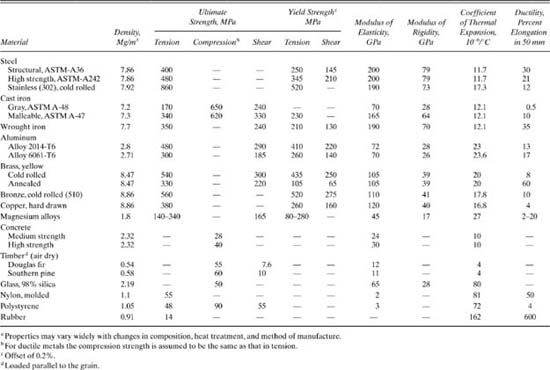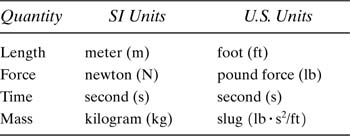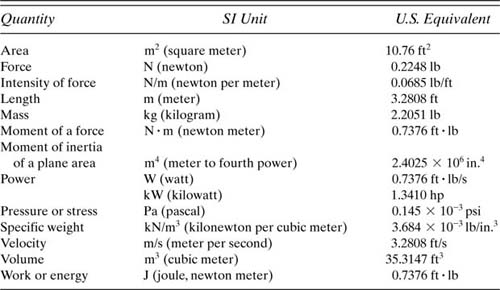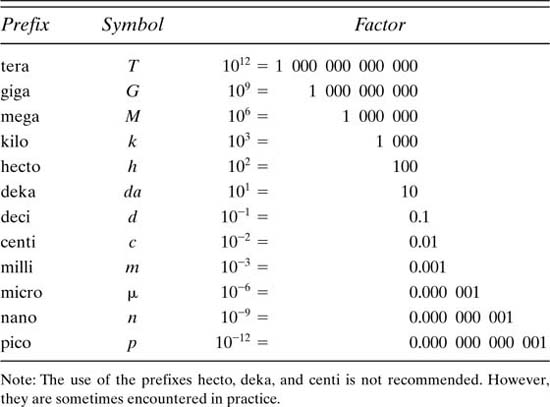Appendix D Tables
The properties of materials vary widely depending on numerous factors, including chemical composition, manufacturing processes, internal defects, temperature, and dimensions of test specimens. Hence, the approximate values presented in Table D.1 are not necessarily suitable for specific application. Tabulated data are for reference in solving problems in the text. For details, see, for example, Refs. 2.3 and 2.4.
Table D.1. Average Properties of Common Engineering Materialsa (SI Units)

Table D.1. Average Properties of Common Engineering Materialsa (U.S. Customary Units)

The International System of Units (SI) replaces the U.S. Customary Units, which have long been used by engineers in this country. The basic quantities in the two systems are as follows:

In the SI system, the acceleration due to gravity near Earth’s surface equals approximately 9.81 m/s2. A mass of 1 kilogram on Earth’s surface will experience a gravitational force of 9.81 N. Thus, a mass of 1 kg has, owing to the gravitational force of Earth, a weight of 9.81 N. Tables D.2 and D.3 contain conversion factors and SI unit prefixes in common usage.
Table D.2. Conversion Factors: SI Units to U.S. Customary Units

Table D.3. SI Unit Prefixes

The expressions for deflection and slope for selected members given in Table D.4 are representative of results found in a number of handbooks [Ref. D.1]. Restrictions on the application of these formulas include constancy of the flexural rigidity EI, symmetry of the cross-section about the vertical y axis, and the magnitude of displacement υ of the beam. In addition, the expressions apply to beams long in proportion to their depth and not disproportionally wide (see Secs. 5.4 and 5.6).
Table D.4. Deflections and Slopes of Beams

